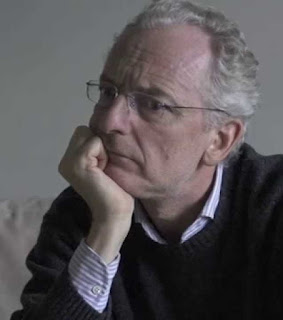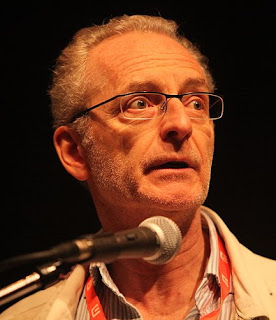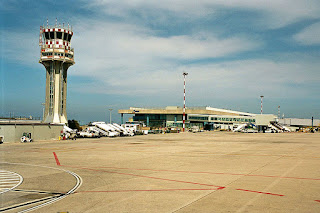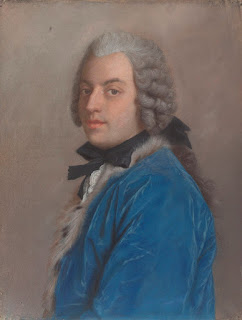Roman count who found unexpected fame with The Full Monty
 |
Uberto Pasolini worked for 12 years as a banker
before finding work in the film industry |
The film director and producer Uberto Pasolini, who gained international recognition when his British comedy The Full Monty became a one of UK cinema’s biggest commercial success stories in 1997, was born on this day in 1957 in Rome.
A nephew of the great Italian director
Luchino Visconti, Pasolini worked for 12 years as an investment banker in England before following his dream to work in the film industry, abandoning his career to work, initially without pay, on the set of the David Puttnam-Roland Joffé film,
The Killing Fields, in Thailand.
Puttnam took him on, at first as a location scout, before Pasolini moved to America to become part of Puttnam’s production team in Los Angeles. He set up his own company in London in 1994 and went on to direct some of his own productions, including the critically acclaimed 2008 movie
Machan, based on a true story about a group of would-be immigrants from Sri Lanka who overcome visa problems stopping them from moving to the West by pretending to be their country’s national handball team.
Like Luchino Visconti, who was a descendant of the same
Visconti family that ruled Milan between the 13th and 15th centuries, Pasolini was from a noble background. Indeed, he was born Count Uberto Pasolini dell’Onda.
 |
Pasolini had always dreamed of emulating his uncle,
the director Luchino Visconti |
He met Visconti on only a handful of occasions but admits he was to a degree inspired by his uncle’s films, particularly the early ones, made in the era of neorealism, which provided a window into a world and social circumstances very different from his own life of privilege, which he ultimately found uninspiring.
Pasolini left Italy as a teenager, first to attend an obscure college in Wales and then the London School of Economics, where he embraced the 1970s punk movement, but in time followed a natural progression into the
City of London, where his talent enabled him quickly to climb the banking ladder.
After 12 years, however, his desire to emulate his uncle Luchino became too powerful. He obtained an interview with Puttnam, who was recruiting candidates to work on his production team for
The Killing Fields. He was rejected but travelled to Bangkok anyway, at his own expense, and turned up on the set, willing to do nothing more testing than make tea if it meant being involved. In the event, Puttnam was impressed with Pasolini’s persistence and took him on as a runner.
It was not long before he was working as a location scout, which he did not only on
The Killing Fields but on two others Joffé films,
The Frog Prince and his 1986 hit
The Mission, starring Robert De Niro, for which he was also named as assistant producer.
 |
The unexpected success of The Full Monty made
Pasolini's name in the movie business |
After following Puttnam to Colombia Pictures in Los Angeles, where he worked on a number of productions, Pasolini returned to London in 1988, first to work for Enigma Films, before launching his own production company,
Redwave Films.
He threw himself into learning all he could about working class Britain, drawing on the fascination instilled in him by Luchino Visconti’s early films about the less privileged levels of society. After receiving some acclaim for
Palookaville, a comedy caper about three burglars, he came up with the idea for
The Full Monty, about six unemployed men in Sheffield, four of them former steelworkers, who decide to form a striptease act.
The comedy, directed by Peter Cattaneo, explored subjects such as unemployment, fathers' rights, homosexuality, body image and working class culture, even suicide. It was a major success with the critics and at the box office, grossing more than $250 million from a budget of only $3.5 million and for a time was the highest-grossing film in UK history. It won the BAFTA Award for Best Film, and was nominated for Academy Awards for Best Picture, Best Director, Best Original Screenplay and Best Original Musical or Comedy Score, winning the last.
Pasolini went on to have more success with
The Closer You Get (2000) and
The Emperor’s New Clothes (2001) before throwing himself into another major project, a story inspired by a real event in 2004, when 23 Sri Lankan men convinced immigration authorities in Germany that they were members of the non-existent Sri Lanka national handball team, were granted visas, played in a tournament, in which unsurprisingly they lost every match, and then disappeared.
The result was a 2008 movie,
Machan, which he directed as well as produced. It premiered at the Venice Film Festival, where it received a 10-minute standing ovation.
Pasolini, married to the film music composer Rachel Portman, enjoyed further acclaim for his 2013 movie
Still Life, his second as director, which won him a best director award at the Venice Film Festival and a number of other awards.
 |
Luchino Visconti's family lived in the 16th century
Palazzo Visconti di Modrone in Milan |
Travel tip:
Pasolini’s uncle, Luchino Visconti, grew up in the
Palazzo Visconti di Modrone, a 16th century palace that can be found in Via Cino del Duca, about one kilometre from the centre of Milan. It came into the possession of the modern Visconti family in the 19th century, when it changed hands for 750,000 lire Milanese. The building, spread over three floors, is one of the richest examples of Milanese rococo.
 |
The elegant Palazzo Santacroce in Rome, which
became the Pasolini dall'Onda residence |
Travel tip:
The family seat of the Pasolini dall’Onda family in Rome was at one stage the monumental
Palazzo Santacroce in Piazza Benedetto Cairoli. Commissioned by Onofrio Santacroce and designed by Carlo Maderno between 1598 and 1602, it was modified by Francesco Peparelli in 1630 and underwent further changes during the 19th century. Once the home of a valuable paintings collection, Palazzo Santacroce is nowadays home to the Italian Latin American Institute. A beautiful fountain featuring Venus, winged angels and dolphins embellishes the former garden.
More reading:
Luchino Visconti, the aristocrat of Italian cinema
The enigma that was Michelangelo Antonioni
How pasta seller Dino De Laurentiis put Italian cinema on the map worldwide
Also on this day:
1908: The birth of writer Giovanni Guareschi
1927: The birth of actress and jazz singer Laura Betti
1947: The Portella della Ginestra massacre
Home
























